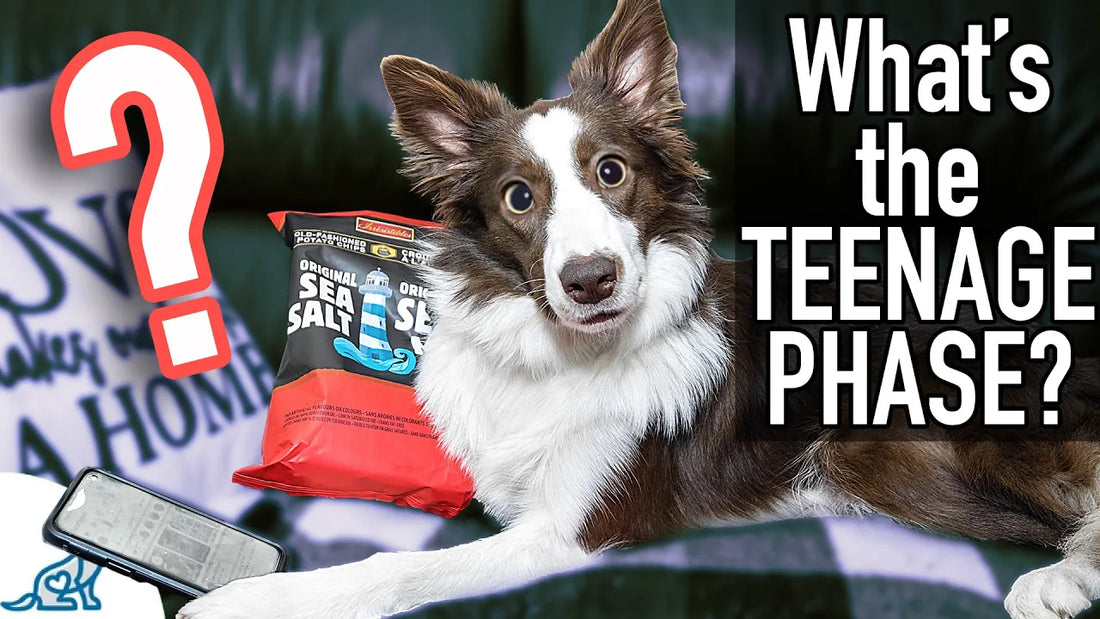You're pulling your hair out. The perfect puppy you had for months has vanished, and in their place is a bratty, rebellious teenager who has "forgotten" every single thing you taught them.
They're ignoring you at the park. They're jumping on the counter. They're chewing things they know they shouldn't. It feels like they have forgotten EVERYTHING you taught them.
First, take a deep breath. You are not alone, and your dog is not broken. You've just entered the adolescent phase, and the good news is, you can train through it. This post is your survival guide.
Why Did My Perfect Puppy Start Misbehaving?
This is the #1 question we get, and the answer is that it's a completely normal part of development. Your puppy isn't misbehaving to spite you; their brain and body are changing. This "teenage phase" will usually happen in two distinct parts.
-
The "World-Is-Interesting" Phase (Around 4-5 Months)
This is when your puppy’s confidence explodes. The baby pup who thought you were the center of the universe suddenly realizes there's a whole world out there. Other dogs, new people, and exciting smells suddenly become way more interesting than you, making distractions a huge challenge. -
The "Boundary-Testing" Phase (Around 7- 11+ Months)
This is the one that frustrates owners the most. Your dog knows the rules. But like a human teenager, they will now deliberately test those boundaries to see if they're still in effect. This is when you'll call their name, see them look right at you, and then make the choice to run in the other direction.
What's the #1 Mistake Owners Make During This Phase?
The biggest mistake we see is giving too much freedom, too soon.
When our puppies are doing great, we get overconfident. We let them off-leash at the park, we give them free run of the house, and we stop using the crate.
Unfortunately, this gives your teenage dog the chance to rehearse all the behaviors you don't want. And worse, they discover that these behaviors are self-rewarding.
-
Chasing a squirrel is more fun than coming to you.
-
Stealing a sandwich from the counter is its own delicious reward.
-
Playing "catch me if you can" with your shoe is a great game.
Every time they "get away with it," the bad behavior gets stronger, and your good training gets weaker.
How to Fix Your Teenage Dog's Bad Habits
When you see a problem, you must dial back the freedom immediately. This isn't a failure or "backtracking." It's smart, proactive management. Here is your 4-step plan.
1. What to do when your dog stops coming when called
This is a non-negotiable. A poor recall is dangerous.
- Put the long line back on. A 21' McCann Dog Training Long Line is your new best friend. It gives your dog the feeling of freedom while ensuring you have 100% control.
-
Stop letting them fail. Don't call your dog if you aren't in a position to enforce it. The long line ensures you can always get your dog back.
-
Be more rewarding. When they do respond quickly to you, have a party. Use high-value treats or their favorite toy. You must be more exciting than the distractions they're interested in.
2. How to stop destructive chewing and house-training accidents
This is a problem of supervision, not a "bad dog" problem.
-
Bring back the crate. The crate is not a punishment. It's a management tool that keeps your dog safe (and your baseboards intact) when you cannot watch them with your full attention.
-
Use baby gates and close doors. Restrict access to "problem rooms." A teenage dog doesn't need access to the entire house.
-
Watch them like a hawk. When they are out of the crate, you must be supervising. If you see them head for a shoe, interrupt them and redirect them to an appropriate toy or a high-value chew.
3. How to stop counter-surfing and jumping on furniture
These are classic "self-rewarding" behaviors. The jump itself is fun, and stealing food is the ultimate jackpot.
-
Use a leash in the house. Keep a light "house line" on your dog. When you see them think about jumping on the counter, you don't have to yell "No!" You can simply pick up the leash and calmly guide them off.
-
Manage the environment. Don't leave food on the counter. A clean counter is a boring counter.
-
Teach them what to do instead. Instead of just saying "no," show them the "yes." Actively reward your dog for lying on their bed, especially while you're in the kitchen.
4. What to do when your dog is distracted by everything
Stop putting your dog in situations where they are guaranteed to fail.
-
Go back to quieter environments. Don't take your dog to the busiest park at 5 PM on a Saturday. Go at an off-peak time or find a quieter spot.
-
Increase your "payment." That kibble in your pocket isn't going to cut it. Bring five or six different types of high-value treats. Bring their absolute favorite toy. You must be able to "pay" them for their attention.
The Secret to Success: Reward the "Yes"
Your goal is to stop playing defense. Your day shouldn't be a constant stream of "No, don't do that!"
Instead, manage the environment so your dog can't fail, and then proactively look for opportunities to reward them for making the right choice. Every time your dog chooses to lie on their bed instead of jumping on the couch, reward them. Every time they look at another dog and then look back at you, reward them.
By managing their freedom and reinforcing great decisions, you'll get through this phase and build a rock-solid, reliable adult dog.
Need help with your training plan? We are here to help you in our Life Skills Programs! Visit: https://www.mccanndogs.com/collections/life-skills
Happy Training!


